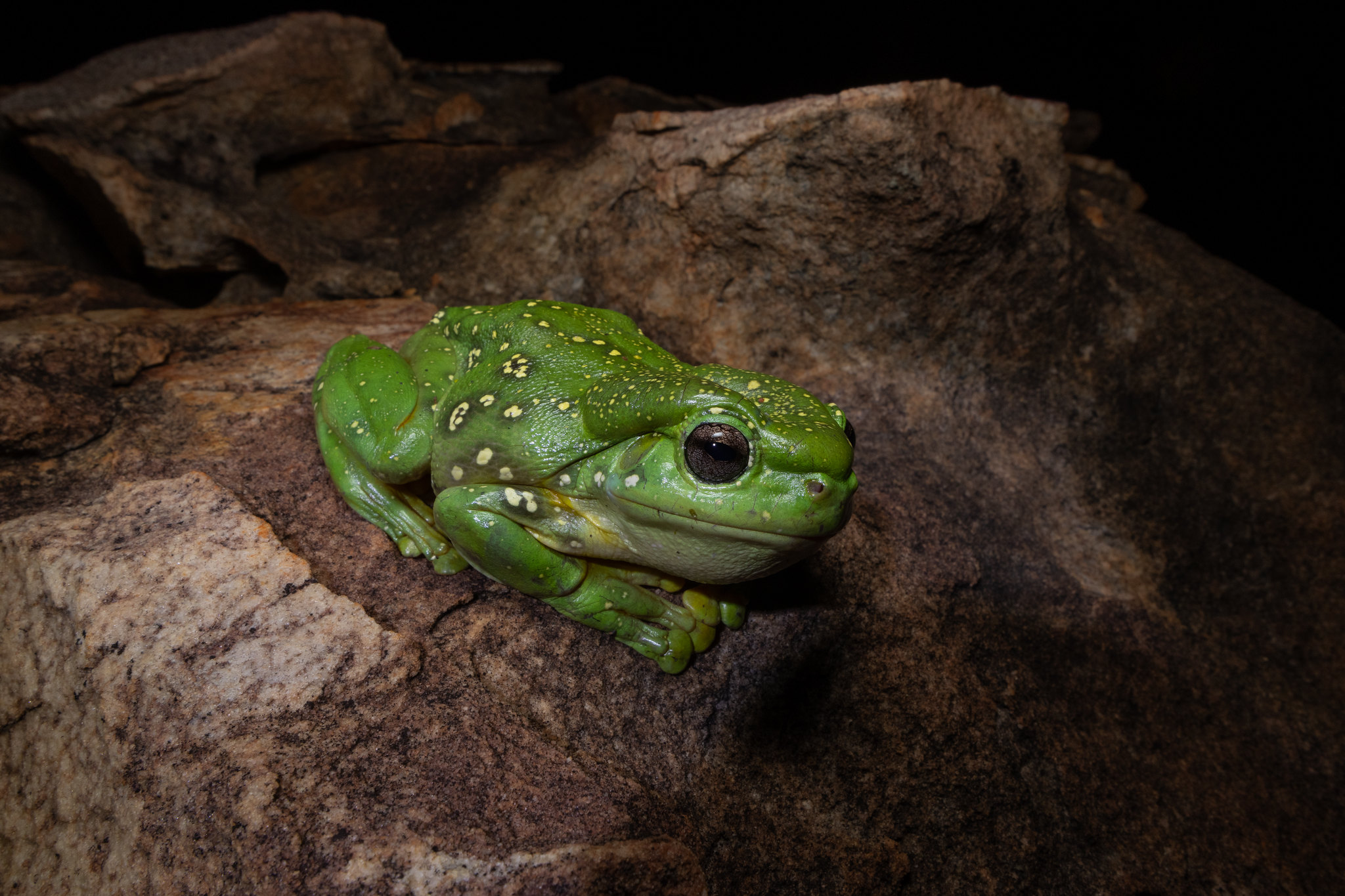The aptly named magnificent tree frog is typically green with a yellow belly, so you can imagine the surprise when scientists stumbled across a member of the species with blue skin. The shocking blue frog is an incredibly rare discovery, most likely caused by a rare genetic mutation that affects the production of yellow pigments.
It was recently photographed by a team from the Australian Wildlife Conservancy (AWC) while exploring the Charnley River-Artesian Range Wildlife Sanctuary along the Kimberley coast of north-western Australia.
“It was after dark when we first spotted it, perched on a bench in the workshop near our research centre. It was very exciting. Magnificent tree frogs are already spectacular, but to see a blue one is a once-in-a-lifetime chance,” Jake Barker, AWC field ecologist, said in a statement.
The magnificent tree frog (Litoria splendida) is found only in a patch of Australia in the northern Kimberley region and neighboring parts of the Northern Territory. Typically growing to around 12 centimeters (5 inches) in length, their green coloration acts as a camouflage in the leafy environment they inhabit.

Another magnificent tree frog (Litoria splendida) with more typical green pigmentation.
Image credit: J. Barker / AWC
“This is one of a number of north-west endemics that we come across pretty regularly around here. They’re not found anywhere else. That’s the great thing about working in the Kimberley – you never know what rare wildlife you’re going to see each day,” noted Barker.
Green coloration in animals like amphibians, reptiles, and birds is typically created by a combination of blue and yellow pigments. There is, however, a well-known mutation called axanthism that interferes with the biochemical pathways that synthesize and deposit yellow pigments, causing the animal to appear blue.
Axanthism has been reported in a handful of different animals, but this is the first time it’s been documented in a magnificent tree frog.
“Very occasionally, a green frog is missing yellow pigment in its skin, and it results in an entirely or mostly blue frog. I’ve seen tens of thousands of frogs over the years, and only seen one blue frog – and it was nowhere near as spectacular as this Magnificent Tree Frog. A rare encounter and one that highlights the spectacular diversity of Australia’s frogs,” explained Dr Jodi Rowley, Curator of Amphibian & Reptile Conservation Biology at the Australian Museum.
Without its green stealthy camouflage, the unique frog is likely to be at a higher risk of being spotted by predators. Fortunately, the species has another trick to stop it from becoming another animal’s dinner. Its head is topped with a large parotoid gland that’s loaded with bitter-tasting liquid. The mild poison isn’t toxic to humans, but it’s potent enough to dissuade large predators from eating them.
Source Link: Mutant Blue-Skinned Frog Spotted In "Once-In-A-Lifetime" Encounter